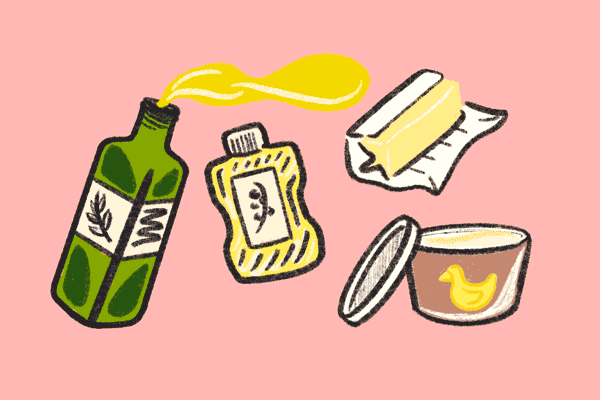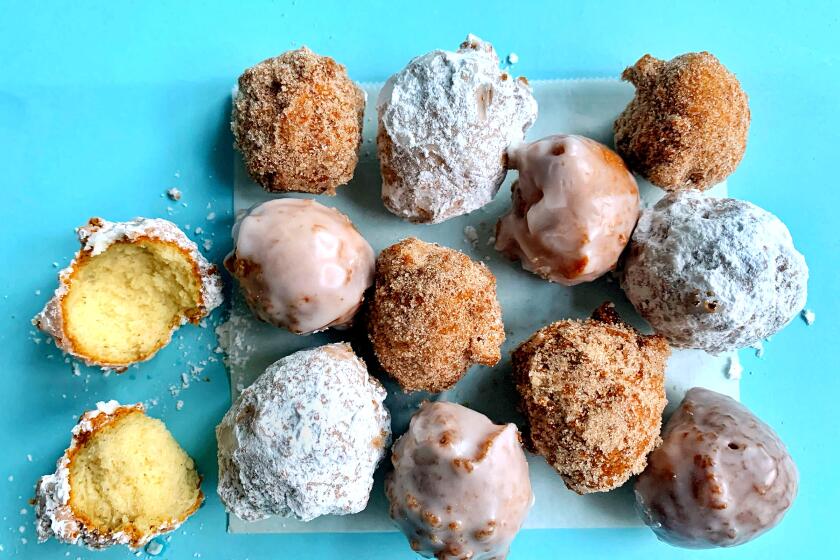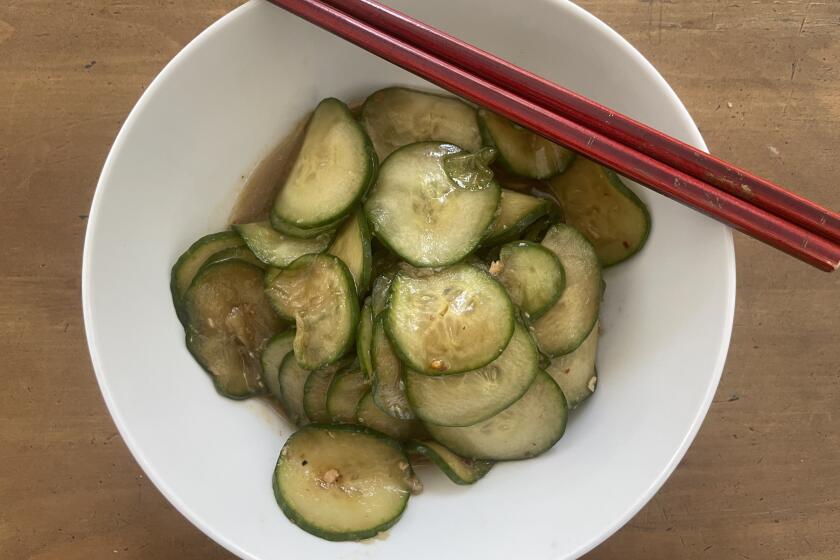Choosing the best fats for frying will make your food tastier (and less greasy)

Using the right kind of fat for different types of frying will make whatever you cook more delicious.
Generally, the higher a fat’s smoke point — the temperature at which the fat goes from hot and shimmery to smoky and acrid — the more versatile and durable it is as a frying medium. A wisp of smoke is fine before tossing ingredients into a wok for a stir-fry or skillet for a sear, but a plume rising from the pan means the oil is burning, and the taste of burnt (not browned or toasted) fat is rarely what we’re looking for in the kitchen.
To figure out which fat I want to use for which frying job, I think of them in these categories:
Low to medium heat: butter (fresh and clarified) and usli ghee
Butter’s fat content ranges from 80% to 85%; the rest is 13% to 18% water and 1% to 2% milkfat solids and whey proteins. When heated, butter goes from melted to brown to burnt. If it hits that last stage, it will ruin whatever you’re cooking — plus, the fat colliding with the water over higher heats sputters and can burn you.
If you want butter’s distinctive flavor in dishes that require frying, use usli ghee, a staple in Indian cuisine, or clarified butter. Clarifying butter — removing the whey and water by applying gentle heat — raises the point at which the butter smokes from 300 degrees to 450 degrees. Ghee is cooked longer than clarified butter, giving it a nuttier aroma.
Even though ghee and clarified butter won’t smoke until that high temperature, their flavor is more potent when used in medium-low and medium-heat frying.
Medium to medium-high heat: rendered animal fats (lard; beef tallow; chicken fat (schmaltz); duck fat)
Lard was fundamental to cooking around the world until the dawn of processed and heavily marketed fats like Crisco. It’s a staple of Mexican cooking, which makes it easy to find in L.A. Thanks to the popularity of the keto diet, other rendered animal fats are now readily available at supermarkets and online too. They taste the richest of all fats and with smoke points that range from 375 to 400 degrees, they can be used for searing, sizzling and other higher-heat cooking, including deep-frying. The rendering process may leave some liquid in the fat, so watch out for popping when you heat it.
Medium-high to high heat: refined vegetable-based oils (vegetable, canola, corn, peanut, sunflower, safflower, rice bran, virgin/light/pure olive, refined avocado and grapeseed)
Vegetable oils that are processed and refined after pressing end up with high smoke points, so they can be used in a multitude of ways and last longer in the pantry. What they lack in taste, they make up for in versatility.
With smoke points that range from 390 to 510 degrees, these oils can be used for stir-frying, high-heat sauteing and shallow- and deep-frying. Shallow and deep-frying, when food is partly or fully immersed in bubbling hot oil, require knowing the exact temperature of the oil. If you maintain the correct temperature, you’ll be rewarded with crunchy outsides and properly cooked insides. The food won’t absorb excess oil or feel greasy and actually end up tasting light and crisp.
If you’re new to deep-frying, start with doughnut holes. The simple batter doesn’t risk popping hot oil the way watery vegetables or meat might. Plus, it doesn’t require any dough resting or rolling and gives you the incomparable pleasure of freshly fried hot doughnuts.
Doughnut Holes
More to Read
Eat your way across L.A.
Get our weekly Tasting Notes newsletter for reviews, news and more.
You may occasionally receive promotional content from the Los Angeles Times.












